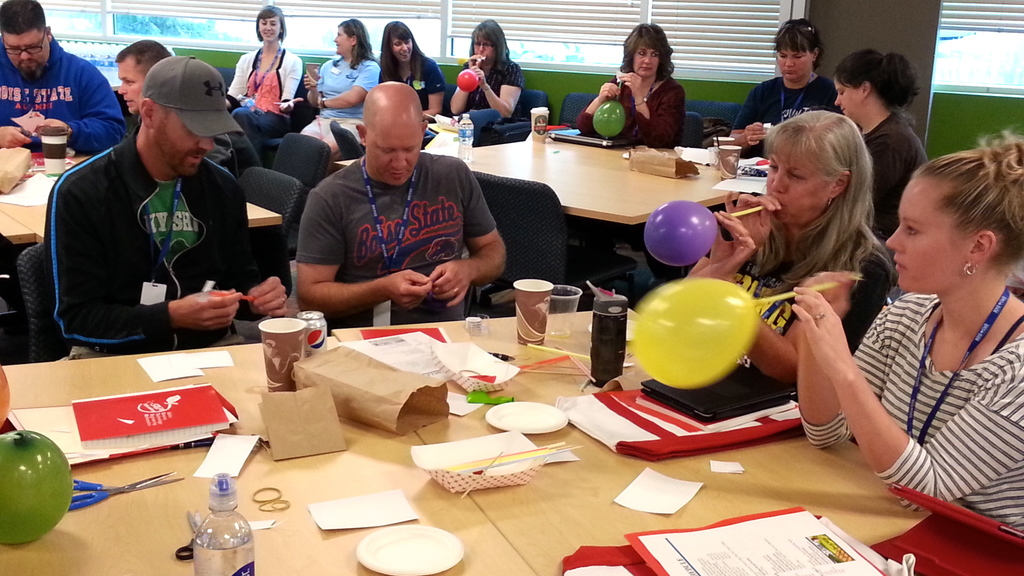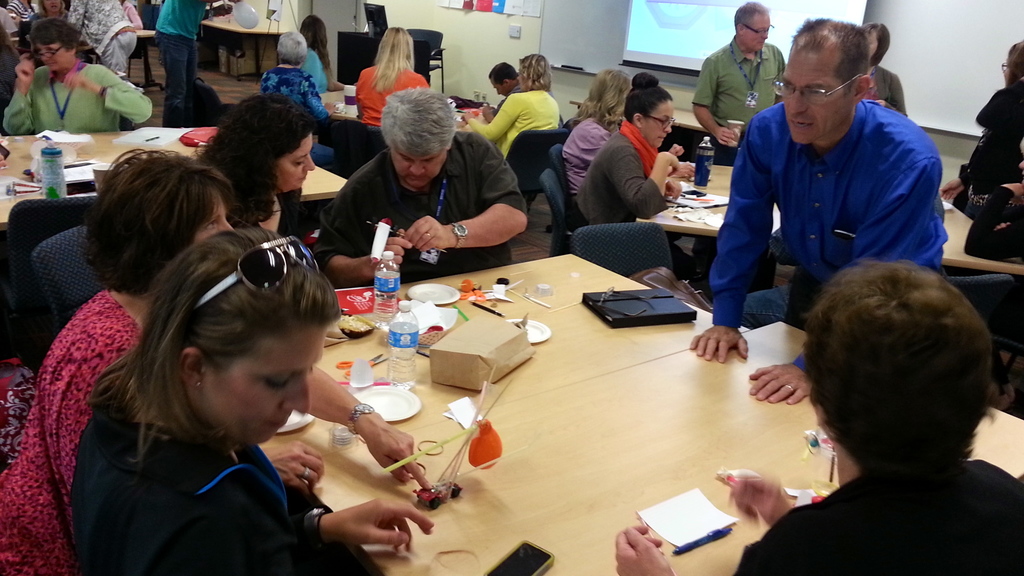By 8:30 Tuesday morning, colorful balloon powered rockets were zooming across the conference room and 100 teachers were cracking up.
Not a bad start for a three-day summer professional development program, keynote speaker Louis Nadelson thought.

Nadelson, an associate professor at Boise State University, served as the keynote speaker for this week’s Idaho Science, Technology, Math and Engineering Initiative Institute in Meridian.
Nadelson made it clear he wanted to focus on hands-on science and STEM lessons teachers could bring back to their classrooms.
He encouraged them to break the rules – not to limit themselves to the simple instructions or materials he provided if they found a more creative way to design a science experiment.
That’s also where the balloons, rockets and laughter came in.
“You will remember a lot more about making balloon paper rockets and cars than what I said in here,” Nadelson told teachers. “Beside that, it’s fun to teach.”
When they weren’t assembling rockets and cars, teachers designed earrings using colored beads designed to represent different strands of DNA.
They went on to extract DNA from fruit such as strawberries and kiwis.
They ran experiments using microscopes and stethoscopes.
And they used digital cameras they each were given to measure the velocity of a model car accelerating down a ramp.
This wasn’t recess though.
Nadelson is the point man on a math and science grant that helps pay for about 500 teachers every summer to attend one of the five regional iSTEM Institutes. iSTEM represents a larger partnership between the State Department of Education, Idaho National Laboratory, Idaho’s universities and community college and numerous businesses such as Micron and Idaho Power.

At one point, Nadelson flashed statistics from the U.S. Bureau of Labor Statistics that forecast job growth over the next decade.
The slide showed job growth in medical science, nursing, engineering, computer science and more than a dozen other fields.
In Idaho, that means STEM opportunities abound at hospitals and doctors offices, semiconductor facilities, asphalt plants and government agencies. Even police departments, dairies, agriculture fields and forest jobs are expecting advanced STEM skills from the next generation of workers.
“This is a little more pragmatic – building a STEM pipeline (for students’ careers),” Nadelson said. “This is based on a lot of research – what we know about and how we learn – and the demands of the 21st century workforce.”
Monique Gafford, who teaches eighth grade earth science at Lone Star Middle School in the Nampa School District, attends the iSTEM program every summer and loves it.
She seeks out new ideas for lesson plans and covets the chance to bring materials back to her classroom each fall.
The other big selling point Gafford found is that iSTEM speakers such as Nadelson and Woody Sobey from the Discovery Center of Idaho keep her attention with hands-on activities.
“This isn’t one of those times where they hand you a curriculum book that I’ll never open again,” Gafford said. “Everything has a practical application.”
About five years into iSTEM, Nadelson said the program is making progress. About 500 teachers are participating in the five regional institute sessions this month. And the grant money and corporate funding can reach 1,500 teachers over three years.
“A couple of years ago when we talked to people about STEM they thought stem cells,” Nadelson said.
That’s changed.
Now, teachers have caught on to the point that space in the iSTEM summer program typically fills up on the first day the institute is offered. Unexpected demand even briefly crashing the registration website a year ago, organizers said.
Teachers looking to participate next year in the expense-paid professional development program that offers them one or two continuing education credits may apply on March 1, 2014.
Disclosure: Idaho Ed News reporters are employees of Boise State University.
